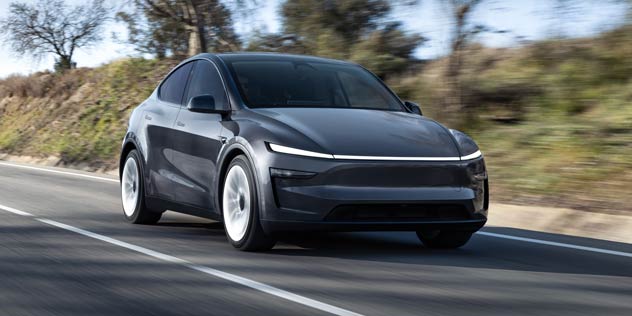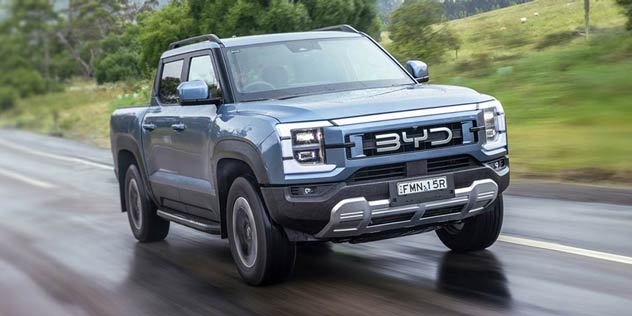
Key points:
If you’ve been watching the local electric vehicle (EV) scene lately, you’ll know things aren’t exactly humming along for electric car sales in Australia in 2025.
After a promising run last year when battery electric vehicles (BEVs) and plug-in hybrids (PHEVs) surpassed 110,000 sales, new EV sales have hit a slow patch just as the rest of the world seems to be picking up the pace. Hybrid sales are still growing but not at the breakneck pace we’ve seen in previous years, either.
Aussie drivers are keen on cutting fuel costs and trying something new, but many still have cause to hesitate, a new NRMA survey of 1131 members has shown. Half the respondents say they will not buy an EV in the future, up from about a third in 2024. The reasons most commonly cited were driving range and towing.
While worries about the safety of EVs have dropped from 20 per cent in 2024 to just seven per cent in 2025, concerns still hang on infrastructure and price for both those that would buy and those that wouldn’t: three quarters of those who are unsure if they would buy an EV say more chargers would make them feel more comfortable about switching, and 64 per cent say they want a price that matches a petrol or diesel equivalent.
It’s not exactly an indicator that Australia is turning away from zero and low emissions options (and indeed we can’t, as we don’t make cars anymore and must follow the lead of the world). The big question now is: if we are slow to overcome misgivings about EVs, will plug-in hybrids and hybrids instead displace the combustion engine fleet?
How does Australia stack up against global EV trends? Let’s start with the drivetrain mix. In the first half of 2025, Australian sales of plug-in hybrids have doubled since H1 2024, reaching 25,613 units. That’s now half the volume of pure battery electric vehicle sales, which came in at 47,145. Combined, BEVs and PHEVs now make up 10.7 per cent of all new vehicle sales – 7.6 per cent and 4.1 per cent respectively.
While hybrid sales jumped from under 100,000 sales in 2023 to 173,000 sales the following year, sales in the first half of 2025 are up by only 12.8 per cent compared to the same period in 2024, with 93,746 units sold in the first half.
— Bridie Schmidt
Meanwhile, global EV sales are rocketing ahead, especially in China and Europe, leaving Australia looking a little sluggish by comparison.
Fresh figures from BloombergNEF show that one in four passenger EV sales globally is now electric (26 per cent to be exact) and EVs are set to top 22 million units in 2025 – a staggering leap from fewer than 10 million just three years ago.
Battery electric vehicles (BEVs) remain the frontrunners, but plug-in hybrids (PHEVs) and range-extenders (which run on batteries topped up by small combustion engines) are also making gains, particularly in markets where charging infrastructure is lagging.
China continues to lead the EV pack, with nearly two-thirds of all global EV sales. Europe remains a strong second, while the US holds steady in third place. Australia, on the other hand, is still in the early stages, trailing other developed markets.

EV sales in Australia slipped by 6.5 per cent to 47,145 in the first half compared to last year. One third of these sales come from Tesla and Polestar, reporting directly to the EVC. There are now around 100 all-electric models available locally, though about a third are not clearly listed in VFACTS (gathered by the Federal Chamber of Automotive Industries, or FCAI), in particular those sharing names with combustion variants.
A handful of vehicles – including Smart, Cadillac, and the little-known Tembo Tusker ute – aren’t reported to either VFACTS or the EVC. A spokesperson for Cadillac told the NRMA it won’t be reporting sales figures for 2025 in either Australia or New Zealand, which includes its Lyriq electric SUV. It’s a reminder our official stats aren’t always the full picture.
While these factors can mean getting a clear idea about BEV sales can be tricky, there are more and more EVs (and brands) landing with unique names, so we can get a fairly accurate indication of the most popular EVs in 2025.

Image: The 2026 Tesla Model Y
Though Tesla’s sales have shrunk significantly, its pioneering position in the market means it is still out in front: while Model Y sales are down by around 2000 sales year-to-date, and Model 3 sales are down more than 60 per cent, it is still the electric market leader.
New entrants, such as the BYD Sealion 7, Kia EV5 and EV3, and the Geely EX5, are champing at the bit. Interest in the BYD Atto 3 has plummeted by 70 per cent, while MG MG4 sales have increased 40 per cent.
|
Make & model |
Sales |
|
Tesla Model Y |
10431 |
|
BYD Sealion 7 |
3756 |
|
Tesla Model 3 |
3715 |
|
Kia EV5 |
2765 |
|
MG MG4 |
2268 |
|
BYD Atto 3 |
1854 |
|
Geely EX5 |
1845 |
|
BYD Seal |
1609 |
|
BYD Dolphin |
1337 |
|
Kia EV3 |
1153 |
*NRMA has enquired about full EV sales from carmakers that have EV sales combined with ICE figures, but not all had provided full sales figures at the time of writing.
Yet, even as overall BEV sales dipped, electric SUVs bucked the trend, growing by 24 per cent, and they now make up 9.2 per cent of the SUV market. Sedans, on the other hand, have lost their shine, slipping to just 11.6 per cent of electric car sales – due largely to the sharp drop in Tesla Model 3 deliveries.
As for utes and vans, the revolution is still idling at the kerb. Just 296 electric commercial vehicles were sold in H1, all of them vans – a tiny 0.2 per cent market share.
PHEVs are having a moment – especially in commercial vehicles. Out of nowhere, PHEV utes have stormed the segment, with 10,755 sold compared to absolutely none in 2024, now commanding 6.6 per cent of that market – largely due to BYD Shark sales. PHEV SUVs are also finding fans, jumping 84 per cent to 14,386 sales. Sedan PHEVs remain rare, with just 472 sold – hardly a blip on the radar.

Image: The 2025 BYD Shark PHEV ute
While the welcome these low emissions options are receiving from Australian drivers is encouraging, it’s important that new PHEV owners remember to plug in regularly, lest they miss out on the fuel savings the drivetrain promises, and along with that, the promised reductions in emissions.
Hybrid sales climbed 15 per cent, driven mainly by a 27.4 per cent jump in SUV sales, but fell 18 per cent in the passenger car segment. The ever-popular Toyota RAV4 hybrid is down, with buyers facing ongoing stock shortages.
As with BEVs, hybrids still haven’t cracked the commercial market in any meaningful way, despite at least one model, the Toyota Prius, being present for more than 20 years. In fact, PHEVs make up the majority of low-emission commercial uptake.

Image: The 2026 Toyota RAV4
Australia’s changing drivetrain mix isn’t happening in a vacuum. The introduction of the New Vehicle Efficiency Standard (NVES) has carmakers scrambling. Kia has said it expects to come close to its requirements if it achieves 11,000 sales of its electric-only lineup (made up of the EV3 , EV5, EV6 and EV9). Volkswagen has only recently started introducing its electric range, including the ID.4 and ID.5 and the ID.Buzz , and is instead backing its current diesel fleet.
The Federal Chamber of Automotive Industries (FCAI), says carmakers will struggle to meet NVES targets, blaming not just supply, but also lingering affordability concerns, patchy charging infrastructure, and flagging consumer confidence.
“But supply is only part of the equation. Demand remains constrained by a lack of affordability, infrastructure and consumer confidence, factors that the government must address if the NVES is to succeed,” said FCAI chief Tony Weber.
So where does Australia’s electrified and electric car market really stand? While global EV sales are set to break records, Australia’s numbers look modest. In China, electric cars are a mainstream option – here, it’s just starting to bust out of early adopter territory.
Globally, battery electrics are dominating new sales, but in Australia, hybrids lead in front of BEVs, and plug-in hybrids are finally gaining some traction, especially in the commercial space.
That said, Australia is gradually closing the gap, with BEV and PHEV sales accounting for over 12 per cent of new vehicles in the first half of 2025 (up from 9.6 per cent in 2024), and hybrid sales now at 15 per cent. The direction is clear, even if the pace is uneven.